Henbit
- Mint (Lamiaceae family):
- Lamium amplexicaule L.
- EPPO code:
- LAMAM
- Other names:
- Henbit deadnettle
Species information
- Lifecycle:
- Annual or winter annual.
- Propagation:
- Reproduces by seed
- Emergence:
- Henbit germinates in the fall. Seedlings can appear in early spring.
- Habitat:
- Native to Eurasia and North Africa, henbit is now common in southern Ontario’s waste and water areas, on roadsides and in crop lands. It is most commonly found in cereal crops. It is found less often in corn and soybeans, since the species can be managed easily prior to planting.
- Competitiveness:
- A study conducted by Purdue University identified crop yield losses as high as 38% in cereals. Henbit is also an alternate host for soybean cyst nematode.
Identification clues
Seedling
- Cotyledons:
- Oval to round, with two small lobes at the base and a long stalk. Hairless.
- First leaves:
- Circular to heart-shaped, with 2–4 indentations on each side and a long stalk; opposite leaf orientation.
Mature plant
- Mature leaves:
- Mature leaves look similar to first leaves with opposite leaf orientation and circular to heart shaped and coarse rounded lobes or teeth. The lower leaves have a long stalk, but the upper leaves are sessile (stalkless) broad-based giving the impression of a single leaf wrapping the stem.
- Stems:
- Stems are square in cross-section. They appear erect, high and heavily branched near the base. As they mature, they become further erect and finely hairy. Henbit’s stem is green or purple in colour.
- Flowers:
- Small and tubular with united petals, pink to purple flowers that appear in clusters in the axils of upper leaves. Henbit flowers in spring and early summer.
- Roots:
- Fibrous
Often mistaken for
I know it's not Purple deadnettle because the upper leaves of deadnettle are triangular and have a purple or red tint to them. The upper leaves of henbit, however, are green, rounded and somewhat heart- shaped.
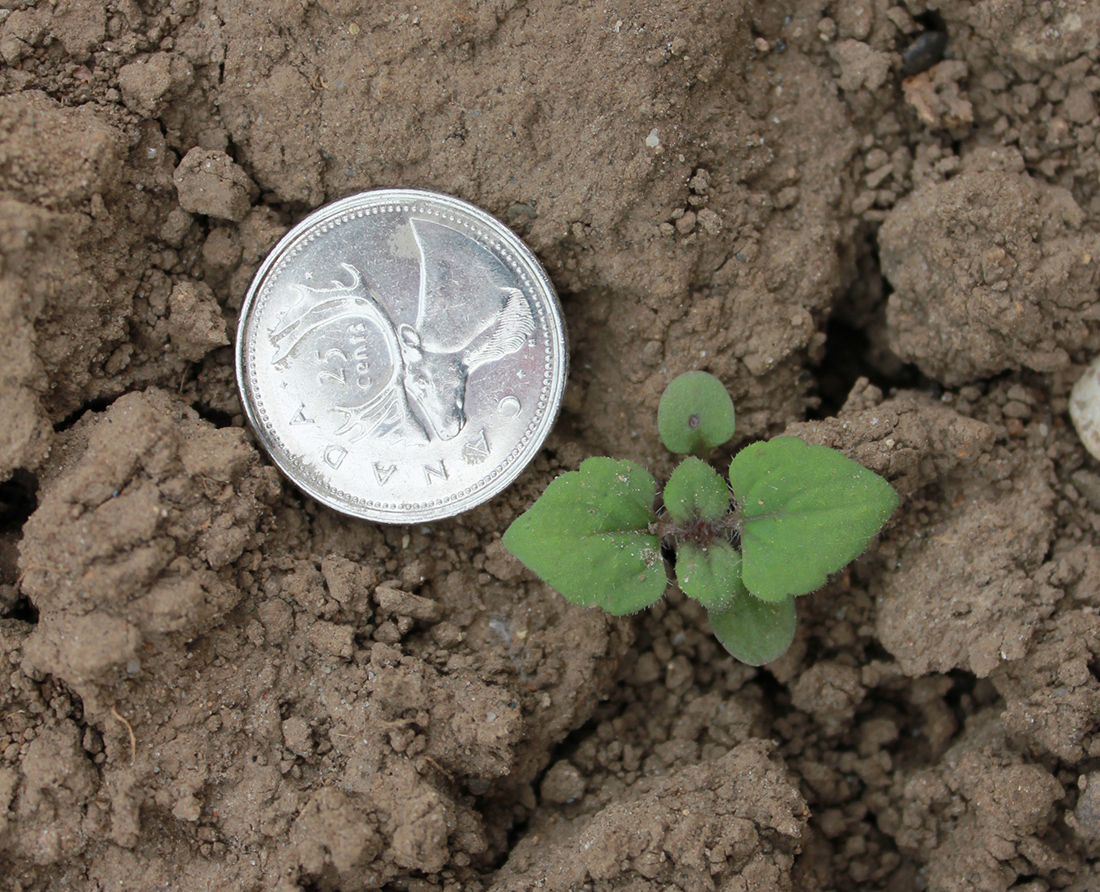
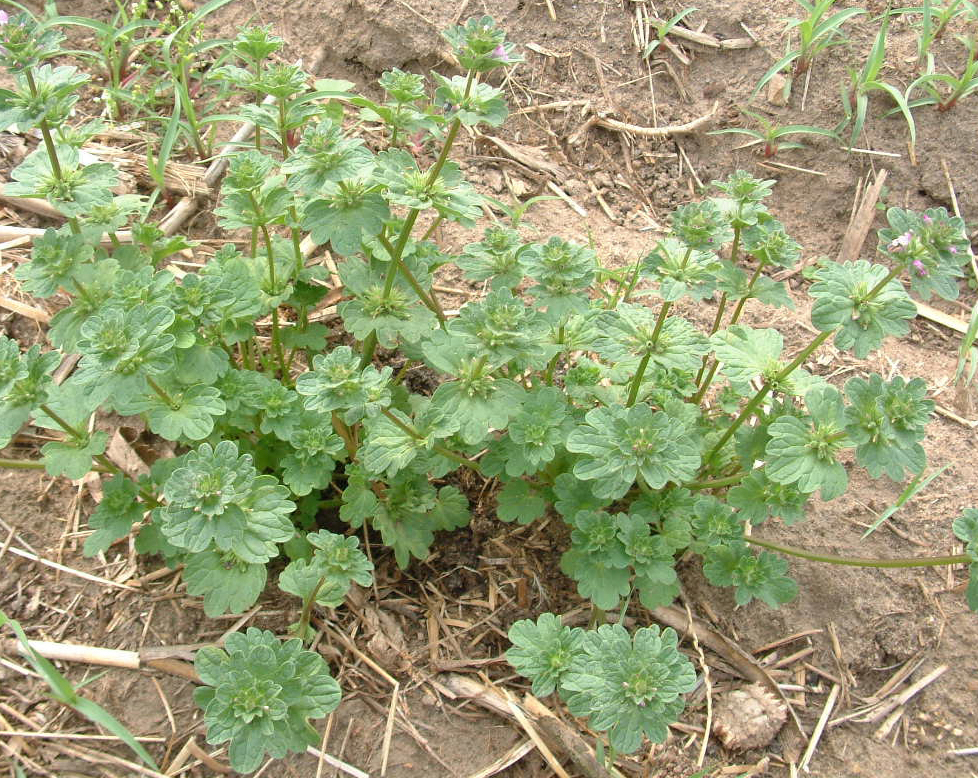
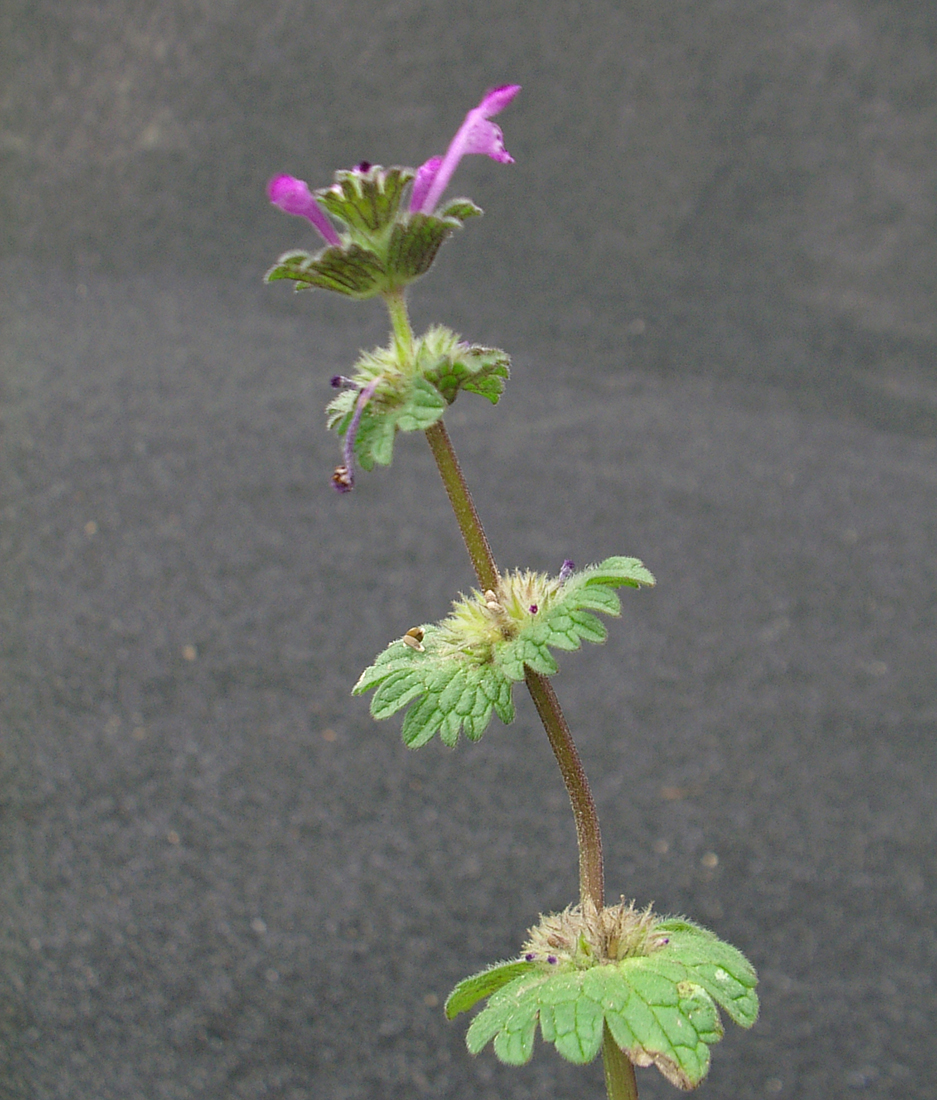
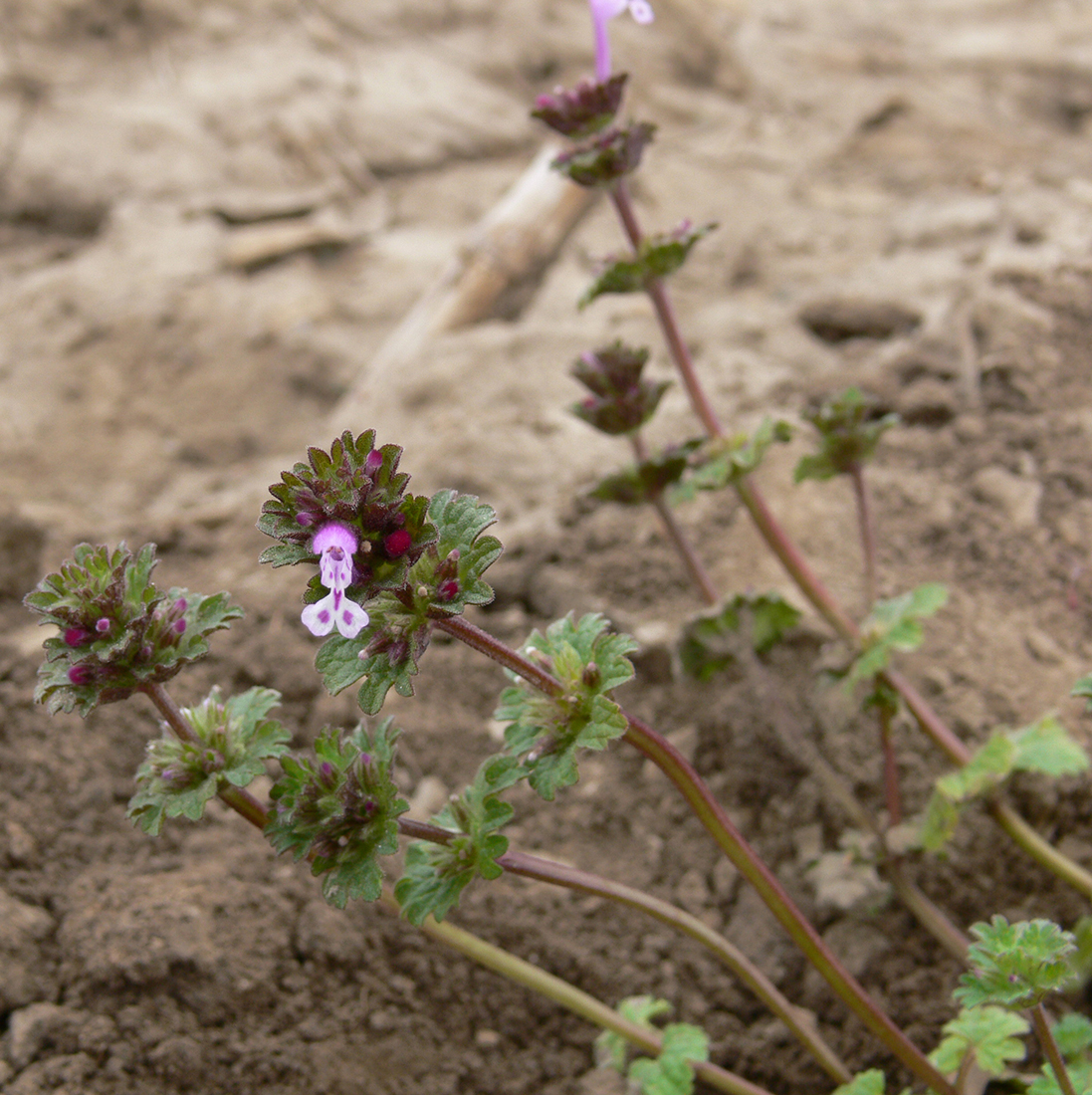
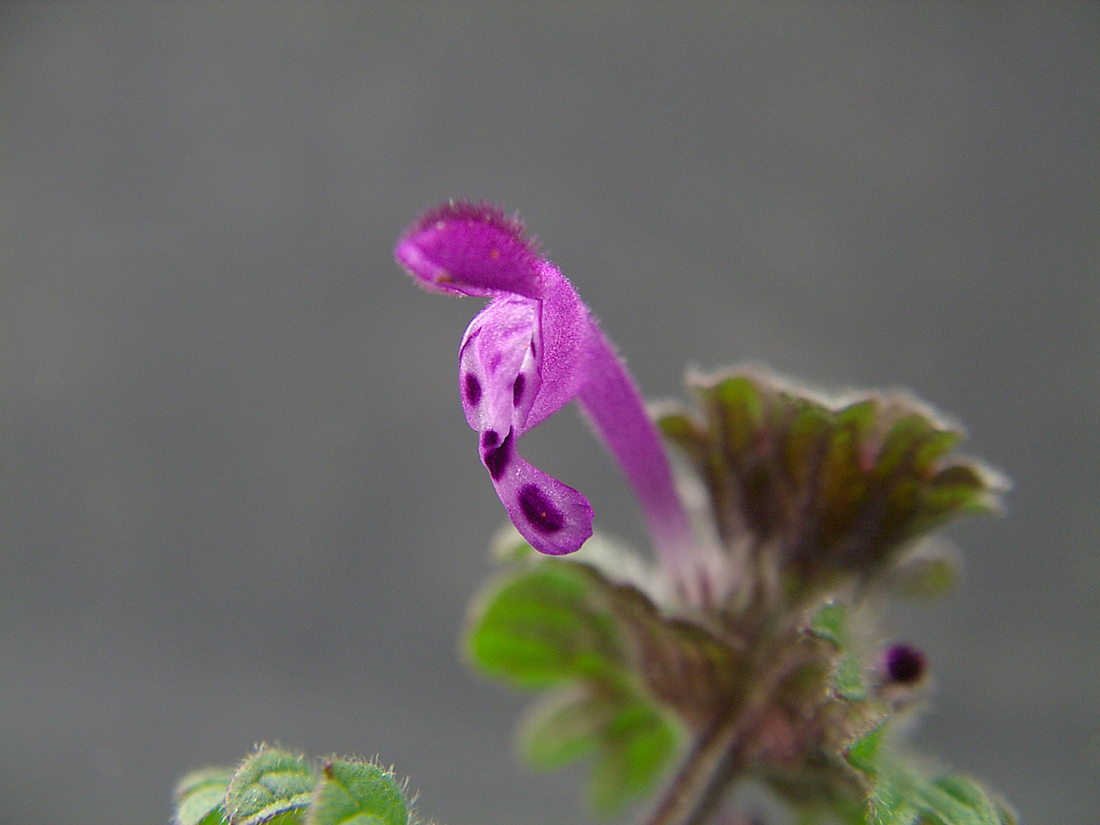
Updated: January 13, 2023
Published: January 13, 2023